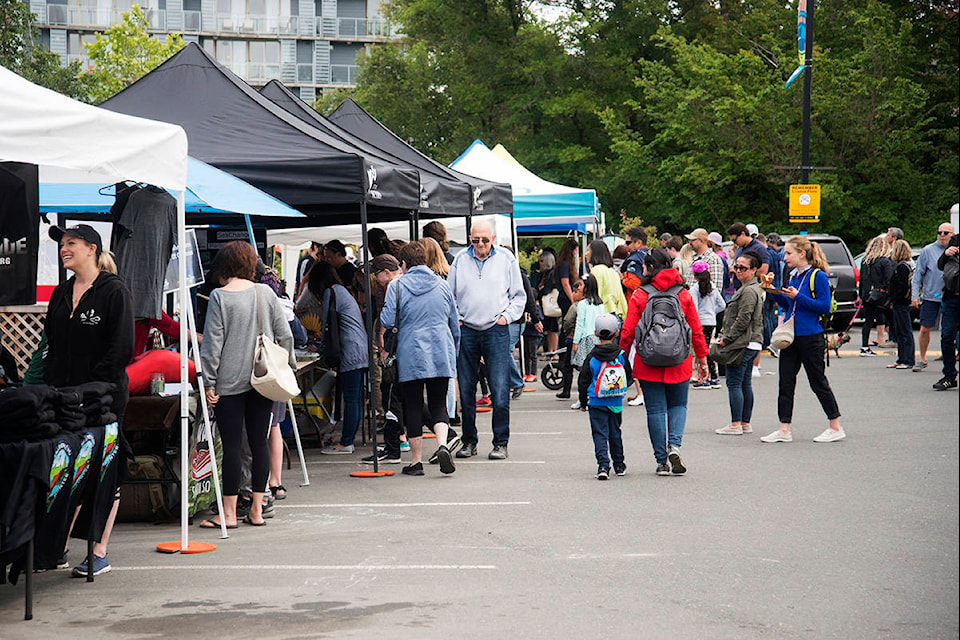At Fishermans Wharf, celebrating World Oceans Day comes with the chance to put together an orca skeleton like a puzzle, inspect the crustaceans on harbour debris and peer into a tank full of ‘eel grass’ – one of the world’s most vital and productive habitats.
Families from Victoria and beyond celebrated the ocean with the seventh annual event put on by the Greater Victoria Harbour Authority (GVHA) and Eaglewing tours, with educational and activity booths set up all around the wharf.
“We’ve been doing this event with Eaglewing Tours for the last seven years and it’s continued to grow every year,” said GVHA communications manager Brian Cant. “People are more in tune with what’s going on with the environment and they are certainly more interested in things like ocean-related plastics and marine recovery with the Southern Resident Orcas.”
READ ALSO: Ottawa announces $13 million for Canada’s coastal habitats on World Oceans Day
Conservationists, marine scientists and volunteers represented organizations like Parks Canada, the Georgia Straight Alliance, Sea Change, Watershed Watch, the Canadian Orca Rescue Society and more.
Filled with a passion for B.C. waters and the species that call them home, the enthusiasm for ocean life and conservation was infectious.
“Being able to engage with the community on World Oceans Day about the ocean we work to protect is really important to us,” said Erin Edwards, volunteer coordinator with the Georgia Strait Alliance. The organization has a number of different outreach efforts, including the one on display Sunday about learning the difference between the transient, mammal-eating orcas and the resident fish-eaters.
“It’s so important to protect this species at risk, and learn the differences between the killer whales that we see in the area,” Edwards said. “Today has been such a great day because we’ve been able to engage with a lot of youth and kids [and] it’s been really exciting to see their love and passion for the ocean.”
After completing a dive in a small section of the harbour, the Emerald Sea Protection Society (ESPS) pulled up dozens of bottles and large pieces of garbage, including a large circular bin. Marine life had all grown all over the debris, adapting to human carelessness – bu not without a cost.
“You can’t see this looking at the water from here,” said diver and ESPS president Bourton Scott. “What we want to do is bring up some of it so you can say, ‘Wow, this is sitting on the bottom right under our nose and we don’t know about it.’”
It’s the same situation happening across our coasts, and all of the Canadian coast lines and the coast lines of the planet,” Scott added.
Marine scientist Ally Stocks nodded in agreement.
“You can see on people’s faces, just that shock that, ‘That’s right under our feet!’ When all you see is a perfect glassy surface of water.”
READ ALSO: Bigg’s orcas in the Salish Sea point to shifting habitat of resident killer whales
READ ALSO: More Puget Sound orcas predicted to die by summer
Cant is happy to see so many people turning up for World Oceans Day – a cause that he says needs some serious attention.
“Everything that’s in the ecosystem is driven by our world’s oceans, so it’s critically important that we help educate people regardless of their age on how important that is to their day-to-day life and the long-term viability of the planet.”
nina.grossman@blackpress.ca
Like us on Facebook and follow us on Twitter



